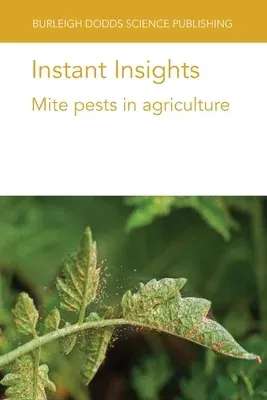This collection features four peer-reviewed literature reviews on mite
pests in agriculture.
The first chapter offers a holistic approach to integrated mite
management by reviewing the basics of mite taxonomy and morphology. It
studies the key plant mite families, focussing on major plant feeding
mites (Tetranychidae, Tarsonemidae, Eriophyoidea), as well as the
natural predators that regulate these mite populations.
The second chapter explores the cultural, biological and chemical
control tactics available for controlling major plant feeding mites.
These tactics include: choosing tolerant varieties and weed management.
The chapter concludes with a discussion on the debate surrounding the
best form of control for mite pests in agriculture.
The third chapter highlights the importance of understanding the
bio-ecology of Tetranychidae species affecting tomato crops, including
the two-spotted spider mite, carmine spider mite and red spider mite.
The chapter considers the effects of each pest on tomato plants, as well
as how best to control them.
The final chapter details the ecology of mite pests affecting wheat that
belong to the Eriophyoidea family, such as gall mites and wheat curl
mites. The chapter discusses the various forms of control for managing
Eriophyid mites, as well as the development of new resistant varieties
of wheat.

